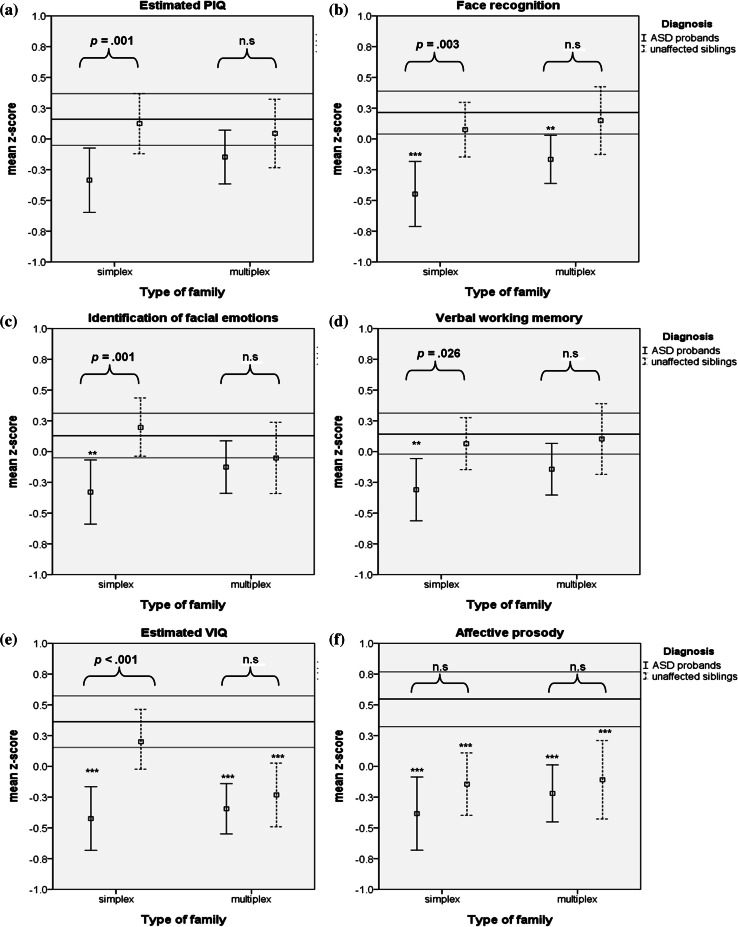Fig. 1.
Comparing unaffected siblings from and within-family contrasts in SPX and MPX ASD families. Note. ASD autism spectrum disorder, n.s. non significant. The interpolation lines represent the mean z-score and the 95 % CI of normal controls. The error bars represent the 95 % confidence interval (CI). Lower z-scores indicate worse performance. Significant group differences (case groups versus controls) that survived FDR correction are depicted using asterisks (***p < .001, **p < .01). Within-family contrasts are depicted using squiggly brackets. Within-family contrasts were higher in SPX compared to MPX families for IQ, emotion recognition and visual working memory, suggesting that affected and unaffected siblings from MPX families resembled each other more closely in cognitive functioning than affected-unaffected siblings from SPX families. Unaffected siblings from both SPX and MPX families were unimpaired on these cognitive domains (a–e). In line with our expectations, we found that MPX unaffected siblings had a significantly lower VIQ (similar to their affected brother/sister) compared to controls, whereas SPX unaffected siblings were unimpaired in this domain. In addition, within-family contrast was highest in SPX ASD families, but non-significant in MPX ASD families for VIQ (e). An unexpected finding was that SPX (like MPX) unaffected siblings differed significantly from controls (but not from their affected brother/sister) on affective prosody (f)

